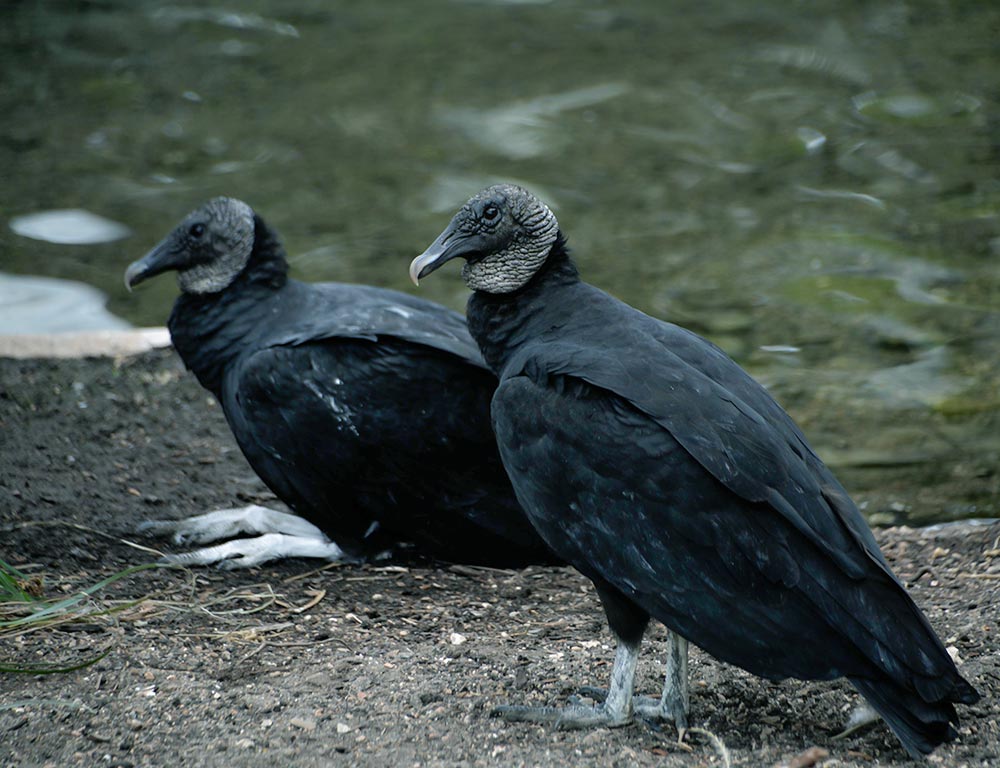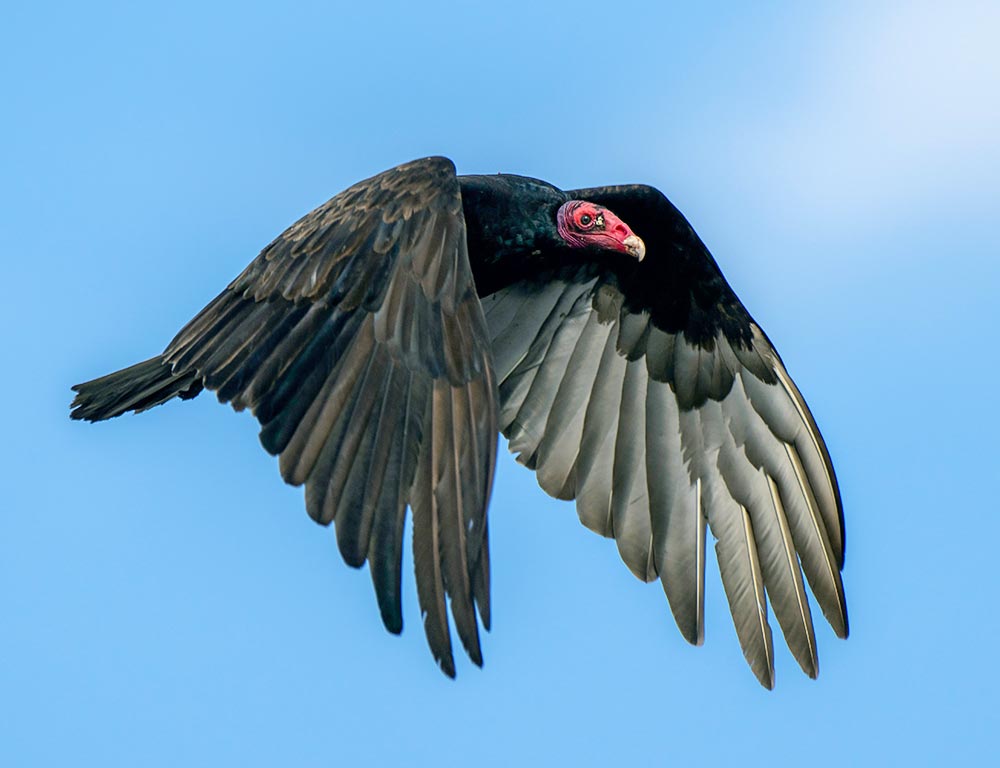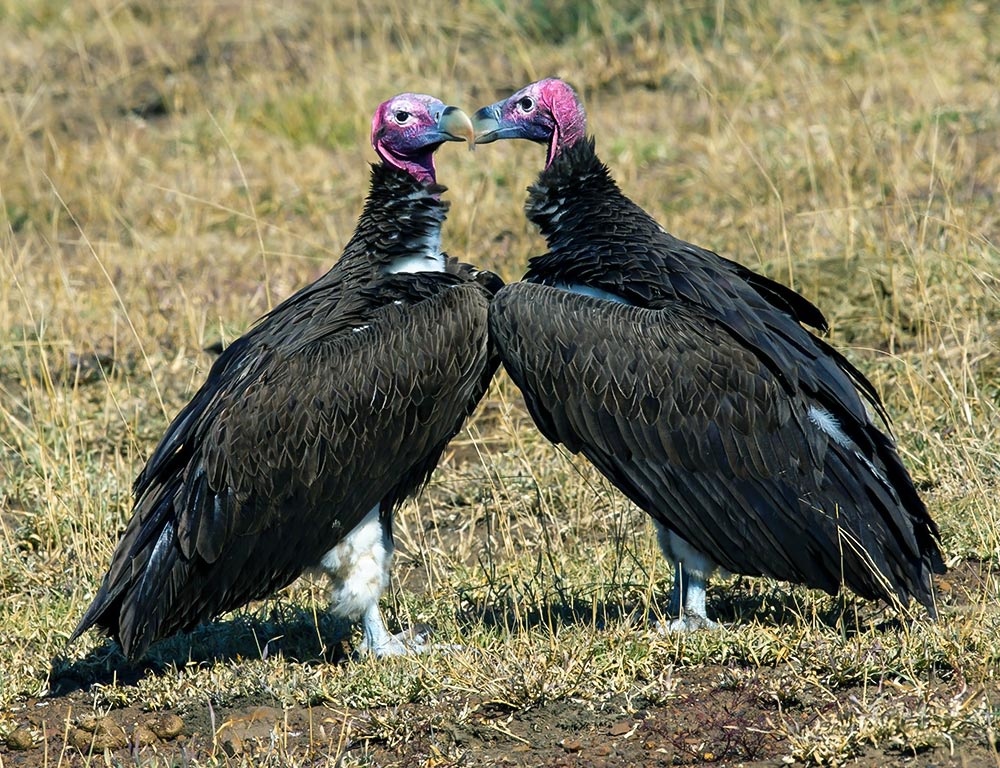Vultures in Georgia play a vital role in the state’s ecosystem as nature’s efficient scavengers. Two prominent species, the Turkey Vulture (Cathartes aura) and the Black Vulture (Coragyps atratus), contribute significantly to the ecological balance.
These birds of prey, belonging to the Cathartidae family, are essential in preventing the spread of diseases by consuming carrion.
With their distinctive characteristics, including wingspans ranging from 4.5 to 6.5 feet, these vultures soar across the Georgia skies, utilizing keen senses to locate and feast upon the remains of deceased animals.
This brief exploration delves into these vultures’ scientific classification, population, life span, size, weight, and wingspan, shedding light on their crucial roles in Georgia’s diverse and dynamic ecosystem.
Is Georgia A Good Place for Vultures?
Georgia provides a favourable environment for vultures, making it a suitable habitat for these scavenging birds. The state’s diverse ecosystems, ranging from forests and wetlands to open landscapes, offer abundant carrion for vultures to feed on.
Georgia’s warm climate and thermals also create optimal conditions for vultures’ soaring flight, allowing them to cover large distances with minimal energy expenditure.
The availability of prey, combined with the relatively mild winters in Georgia, ensures a consistent and reliable food source for vultures throughout the year.
The state’s mix of rural and urban areas further benefits vultures as they adapt to various environments and thrive in natural and human-altered landscapes.
Overall, Georgia’s ecological characteristics make it a good place for vultures, allowing them to fulfil their essential role in the ecosystem by efficiently disposing of carrion and contributing to the overall health and balance of the environment.
Common Features of Vultures in Georgia

Vultures in Georgia, encompassing species such as the Turkey Vulture and the Black Vulture, share several common features that define their adaptations and behaviors in the region:
Scavenging Behavior
Vultures in Georgia exhibit scavenging behaviour, primarily feeding on carrion. This ecological role aids in efficiently removing decaying animal remains, contributing to the ecosystem’s health.
Large Wingspan
Both Turkey Vultures and Black Vultures have impressive wingspans, ranging from 4.5 to 6.5 feet. This adaptation allows them to soar gracefully for food and efficiently cover expansive territories.
Keen Sense of Smell
Vultures, particularly Turkey Vultures, possess a remarkable sense of smell, aiding them in locating carrion from high altitudes. This adaptation is crucial for identifying potential food sources across diverse landscapes.
Communal Roosting
Vultures often engage in communal roosting, gathering in large groups during rest periods. These roosts serve social and practical purposes, facilitating information exchange about food sources and providing protection.
Featherless Heads
Turkey Vultures are distinguished by their featherless red heads, while Black Vultures have dark, bald heads. This adaptation minimizes contamination from carrion and helps maintain hygiene during feeding.
Adaptability to Various Habitats
Vultures in Georgia demonstrate adaptability to various habitats, from forests to urban areas. This flexibility allows them to thrive in diverse environments, ensuring their presence across the state.
Efficient Soaring Flight
Both species are adept at utilizing thermals and updrafts for soaring flight. This energy-efficient flying technique enables them to cover extensive distances while searching for food.
Role in Disease Control
Vultures play a vital role in disease control by consuming carcasses, thus preventing the spread of pathogens. This ecological service underscores their significance in maintaining a healthy and balanced ecosystem.
Understanding these common features provides valuable insights into the ecological contributions of vultures in Georgia and emphasizes the importance of their conservation for the overall well-being of the region’s diverse ecosystems.
2 Types of Vultures in Georgia
Georgia is home to a diverse array of avian species, including several species of vultures that play a crucial role in the ecosystem.
The Turkey Vulture (Cathartes aura) and the Black Vulture (Coragyps atratus) are prominent scavengers contributing to the ecological balance.
Understanding their scientific classification, population, life span, size, weight, and wingspan is essential to appreciate their unique lifestyles.
1. Turkey Vulture

- Scientific name: Cathartes aura
- Category: Bird of prey, Cathartidae family
- Population: Common and widespread in the Americas
- Life span: Up to 20 years
- Size: 25 to 32 inches in length
- Weight: 3 to 5 pounds
- Wingspan: 6 to 6.5 feet
The Turkey Vulture, distinguished by its featherless red head, exhibits a fascinating lifestyle. These scavengers rely on keen eyesight and an acute sense of smell to locate carrion.
Unlike many birds of prey, Turkish vultures lack strong talons for killing prey. Instead, they feed on the carcasses of dead animals, using their sharp beaks to tear through tough flesh.
Their soaring flight is majestic, utilizing updrafts and thermals to cover vast distances with minimal effort. Turkey Vultures are highly social, often roosting in large groups, and their characteristic “V” shaped flight formations are a common sight.
2. Black Vulture

- Scientific name: Coragyps atratus
- Category: Bird of prey, Cathartidae family
- Population: Abundant in the southeastern United States
- Life span: Up to 20 years
- Size: 22 to 27 inches in length
- Weight: 4 to 5.5 pounds
- Wingspan: 4.5 to 5.5 feet
With its glossy black plumage and short tail, the Black Vulture is a distinctive scavenger found in Georgia. These birds play a vital role in cleaning up carrion and preventing the spread of disease.
Black Vultures are more aggressive than their Turkey Vulture counterparts and often displace them from carcasses.
Their feeding habits involve tearing into the soft tissues of carcasses, and they may also eat the eggs or young of other birds. Black Vultures are known for their adaptability, thriving in both rural and urban environments.
Turkey Vultures and Black Vultures are integral components of Georgia’s ecosystem, acting as nature’s cleanup crew.
While the Turkey Vulture’s soaring elegance and communal roosting behaviours characterize its lifestyle, the Black Vulture’s glossy appearance and assertive feeding habits showcase its adaptability and efficiency as a scavenger.
Despite their macabre dietary preferences, both species play essential roles in maintaining ecological balance and are fascinating examples of nature’s resilience and resourcefulness.
How to Increase Species and Number of Vultures in Georgia?

Vultures play a crucial role in maintaining ecological balance by scavenging carrion and preventing the spread of diseases. In Georgia, fostering an environment conducive to vulture populations is essential for the overall health of ecosystems.
Here, we explore seven strategies to enhance vulture species diversity and increase their numbers in the state.
Habitat Conservation and Restoration
Protecting and restoring natural habitats is fundamental for vulture conservation. Preserving forests, wetlands, and open landscapes ensures a stable environment for vultures to nest, roost, and find food.
Conservation efforts should focus on minimizing habitat fragmentation and safeguarding critical areas for breeding and foraging.
Carcass Management Programs
Implementing organized carcass management programs can provide a sustainable and accessible food source for vultures.
Coordinated efforts between wildlife agencies, conservation organizations, and agricultural communities can facilitate the controlled disposal of animal carcasses, reducing reliance on roadkill and mitigating potential risks from poisoning or disease.
Community Education and Awareness
Educating local communities about the importance of vultures in maintaining ecosystem health is crucial.
Outreach programs should emphasize the role of vultures in carcass disposal and disease control, dispelling myths and misconceptions surrounding these birds.
Encouraging a positive perception of vultures can foster public support for conservation initiatives.
Mitigation of Threats
Identifying and mitigating threats to vultures is paramount for their survival. Collisions with power lines, poisoning from ingesting lead ammunition or agricultural chemicals, and habitat destruction are significant threats.
Implementing measures such as installing bird-friendly power lines, promoting lead-free ammunition, and regulating pesticide use can help minimize these threats.
Research and Monitoring Programs
Establishing comprehensive research and monitoring programs is essential for understanding vulture populations, their behaviours, and the factors influencing their survival.
Tracking population trends and migration patterns and identifying key breeding and feeding areas can inform targeted conservation efforts. Collaboration between researchers, conservationists, and governmental agencies can enhance data collection and analysis.
Vulture-Friendly Livestock Practices
Encouraging livestock management practices that benefit vultures is crucial. For example, promoting the use of non-toxic veterinary drugs and proper disposal of carcasses can prevent inadvertent poisoning of vultures.
Creating awareness among farmers about the ecological services vultures provide can foster a sense of shared responsibility for their conservation.
International Collaboration and Legislation
Vulture conservation is a global concern, as many species undertake long-distance migrations. Collaborating with neighbouring states and countries to establish transboundary conservation initiatives ensures a holistic approach.
Additionally, enacting and enforcing legislation that protects vultures and their habitats, both at the state and federal levels, provides a legal framework for conservation efforts.
Enhancing vulture species diversity and increasing their numbers in Georgia requires a multifaceted approach.
By focusing on habitat conservation, organized carcass management, community education, threat mitigation, research, vulture-friendly livestock practices, and international collaboration, we can create a conducive environment for vultures to thrive.
These strategies benefit vultures and contribute to Georgia’s diverse ecosystems’ overall health and resilience.
Wrapping Up
The conservation of vultures in Georgia is imperative for maintaining ecosystem balance and preventing the spread of diseases.
Implementing a holistic approach that encompasses habitat preservation, organized carcass management, and international collaboration will contribute to vulture populations’ well-being and sustainable growth.
By fostering a positive coexistence between humans and vultures, we can ensure the continued ecological services these birds provide, ultimately benefiting Georgia’s biodiversity and environmental health.